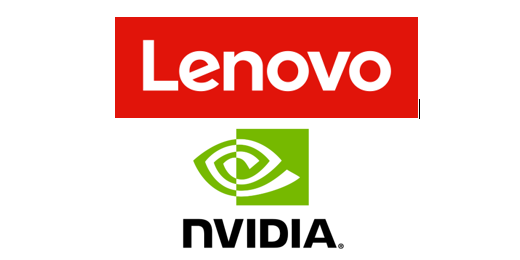Sponsored Post
By Peter Adams, Director of Marketing, HPC at Intel Corporation
Intel’s Partner Ecosystem with ISVs, OEMs, standards organizations, channel resellers and others are delivering amazing capabilities and products using Intel technology. Recently updated for Supercomputing ’21, the Intel HPC + AI Pavilion showcases the breadth of technology innovations that our partners have created.
 Accelerating the Convergence of AI and HPC
Accelerating the Convergence of AI and HPC
Following are a few examples of the demos and sessions from our partners that demonstrate the innovations that are accelerating the convergence of AI and HPC.
- cnvrg.io shows how to simplify a user’s AI journey to build and run AI models at scale on Intel hardware including Intel XPU.
- Fortanix demonstrates how they can help users monetize and commercialize data by securing their AI and machine learning models with Intel® Software Guard Extension (SGX).
- Amazon EC2 DL1 instances powered by Habana Gaudi® Processors demonstrate how a cloud platform can bring scalable AI to everyone with “up to 40% better price performance”.
Innovators Addressing the Needs of a World Hungry for Big Data
Others of our partners address the challenges of the big data tsunami. Both AI and HPC are virtually synonymous with big data, while performance requires fast data.
- Intel technology partners such as MemVerge show that enterprise and HPC IT professionals can run Intel® Optane™ Persistent Memory (PMem) and conventional DRAM at enterprise scale to deliver performance and reliability without requiring any user application changes! Even better, this added performance comes with a cost savings as MemVerge notes that “PMem scales to 512GB per DIMM at half the cost per GB of DRAM.”
- Argonne National Laboratory is taking the cost performance benefits of Intel Optane PMem to the extreme with a definitive use case at scale by using the DAOS software stack plus Intel Optane memory to meet the extreme storage requirements of the upcoming Aurora exascale supercomputer being delivered by Intel and HPE.
Software Providers Optimizing Applications to Run Faster
Independent Service Vendors (ISVs) and other organizations like the University of Illinois Urbana-Champaign highlight how to get applications running fast on the latest Intel hardware.
- David Hardy discussed XPU Support for the NAMD Molecular Dynamics Application with oneAPI.
- Andrey Alekseenko at the KTH Royal Institute of Technology noted that in porting GROMACS to SYCL, that the oneAPI compilers improve performance over OpenCL when targeting Intel hardware.
- Wim Slagter, Strategic Partnerships director at Ansys discussed current optimizations Ansys is using with Intel processors along with selection guidelines in choosing the right platform technologies – processors, memory, and storage for customers to meet design needs and time to market business imperatives.
- Altair’s HPC tools let users orchestrate, visualize, optimize, and analyze the most demanding workloads. They provide a use case where Royal Enfield, a manufacturer of motorcycles since 1901, found Altair Unlimited and Intel® Xeon® Scalable processors to be an outstanding solution.
- Luis Crivelli, Technology Director at Dassault Systèmes SIMULIA Corporation spoke about a number of success stories while noting Intel’s performance contributions in software, compilers and high performance architectures.
Cloud Service Providers
Cloud providers are working to leverage the latest technology to help users around the world get their results faster.
- Intel and Google experts shared their vision of how DAOS on the Google Cloud Platform can fill a critical need for high-performance storage in the cloud.
- The University of Sydney discussed how the Australian Wildlife Genomics group reduced their analysis time from 10 days down to 5 hours on AWS using RONIN.
- Karan Batta, Vice President, Product, Oracle Cloud Infrastructure joined a panel of experts to discuss how HPC in the cloud has enabled extending the reach and impact of HPC for everyone.
Creators Redefining Communications for Scale-out Solutions
Still other partners show how communications are key to creating and deploying AI technology in a cost-effective manner.
- Supermicro demonstrates how to bring Habana Gaudi and Goya chips to the datacenter. Gaudi is the first AI processor to integrate ten 100 Gigabit RoCE ports to enhance scalability and lower total cost of ownership, in part, because it eliminates the need for additional networking cards. Complementing the Supermicro AI ecosystem, the Habana Goya inference processor brings low latency and efficient AI model deployments that complement the Gaudi scale-out capabilities.
- Ayar Labs demonstrated how their TeraPHY chiplet overcomes bandwidth bottlenecks by delivering up to 1000x the bandwidth while consuming 1/10th of the power compared to a standard electrical I/O configuration.
Partners Who Bring the Latest Technology to the World’s Datacenters
Industry partners such as Dell, HPE and Lenovo all work to bring the latest Intel technology to people and datacenters around the world. Through these partners, the world gets rapid access to the latest innovations in HPC, AI, big storage, and enterprise computing.
- With climate change on the minds of many, Lenovo shares insights on power-efficient performance for carbon aware datacenters.
- Jay Boisseau, AI and HPC Technology Strategist at Dell, along with Binay Ackallor, Director of Intel HPC Cloud and Enterprise Solutions Group discussed how the ability to pay-per-use for HPC resources in the cloud makes it a strategic advantage affordable for almost any organization.
Visionary Partners Showing What is Possible
Visionaries at supercomputer centers around the world are demonstrating the freedom to explore that Intel technology innovations now provide users.
- The Ohio Supercomputer Center showcases their work to provide a more accurate view of COVID data using Dell technology.
- The LLNL RUBY supercomputer, built in collaboration with Intel, Supermicro, and Cornelis Networks, is helping visionary scientists fight the current global pandemic.
- TACC, home to Frontera the world’s largest academic supercomputer, highlights recent breakthrough discoveries and their ability to create unprecedented 3D models.
Previews of Exciting New Intel Technology
While the focus is on the fantastic work by our partners, Intel is also providing:
- An early compute and visualization demonstration of the capabilities of oneAPI on the new Intel Ponte Vecchio-HPC GPU
- Results obtained with the Intel® Neural Compressor, which can increase productivity by up to 18x and performance by 30x by quantizing models from FP32 to INT8.
- How we are solving the industry memory issue by creating even more performant memory systems with HBB (High Bandwidth Memory).
Learn more about all these world-changing new technologies in the Intel HPC + AI Pavilion.
Peter Adams is Director of Marketing, High Performance Computing at Intel Corporation. With a BS in Mechanical Engineering from the University of Portland and an MBA from Northwestern University, he has over 20 years of experience in the high-tech industry. He has led AI, Open Source, IoT and other teams focused on product marketing, strategic planning, product management and solving business problems. He loves to travel with family and take advantage of the many outdoor opportunities in Oregon including snow skiing, sailing and hiking.
Performance varies by use, configuration and other factors. Learn more at www.Intel.com/PerformanceIndex.
Performance results are based on testing as of dates shown in configurations and may not reflect all publicly available updates. See backup for configuration details. No product or component can be absolutely secure.
Your costs and results may vary.
Intel technologies may require enabled hardware, software or service activation.
© Intel Corporation. Intel, the Intel logo, and other Intel marks are trademarks of Intel Corporation or its subsidiaries. Other names and brands may be claimed as the property of others.



